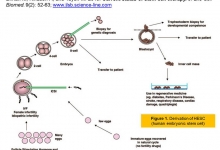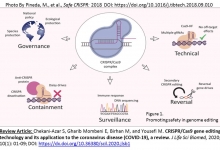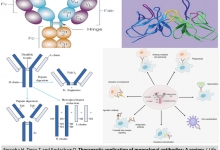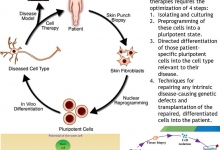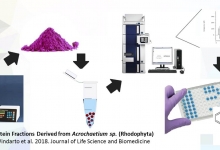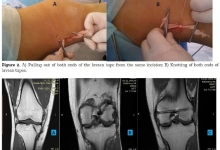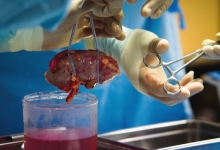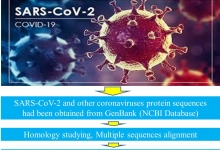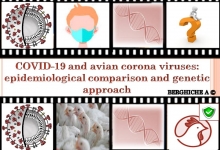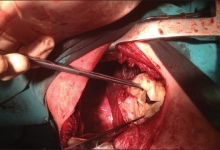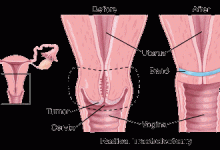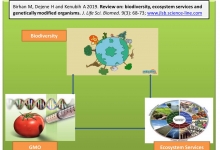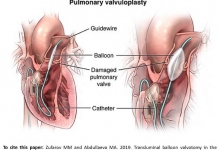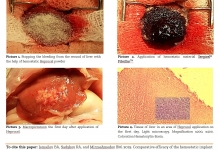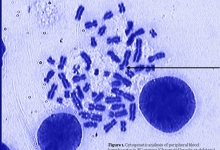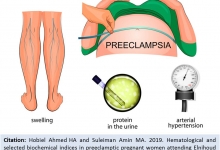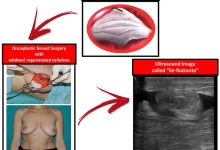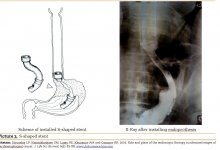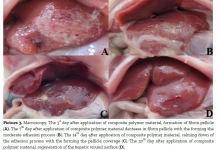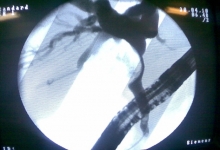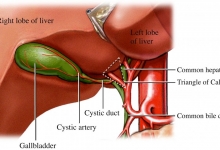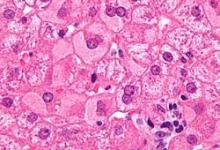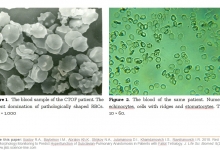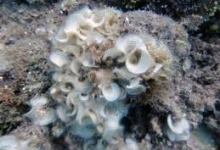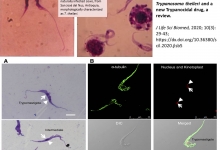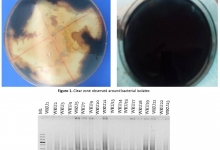Previous issue | Next issue | Archive
![]() Volume 14 (4); December 25, 2024
Volume 14 (4); December 25, 2024
| An understanding of the latest pathophysiological mechanisms of pancreatic β-cells in type 2 diabetes |
Review
A
A
J. Life Sci. Biomed., 14(2): , 2024; pii:S225199392400004-13
DOI: https://dx.doi.org/10.54203/jlsb.2023.4
Abstract
O
Keywords:
[Full text-PDF] [ePub] [Export citation from ePrint] [How to Cite]
| Therapeutic aspects of dietary fibre and glycemic index: a brief review |
Research Paper
P
D
J. Life Sci. Biomed., 14(2): 35-41, 2024; pii:S225199392400005-13
DOI:
Abstract
T
Keywords:
[Full text-PDF] [ePub] [Export citation from ePrint] [How to Cite]
Previous issue | Next issue | Archive
![]() This work is licensed under a Creative Commons Attribution 4.0 International License (CC BY 4.0)
This work is licensed under a Creative Commons Attribution 4.0 International License (CC BY 4.0)
Sustainable Development Goals (UN SDGs)
The Sustainable Development Goals are a call for action by all countries – poor, rich and middle-income – to promote prosperity while protecting the planet. They recognize that ending poverty must go hand-in-hand with strategies that build economic growth and address a range of social needs including education, health, social protection, and job opportunities, while tackling climate change and environmental protection.
Journal of Life Science and Biomedicine (JLSB) is pleased to declare its commitment to the United Nations Sustainable Development Goals (UN SDGs) Publishers Compact. It aims to accelerate progress to achieve SDGs by 2030.
Signatories aspire to develop sustainable practices and act as champions of the SDGs during the Decade of Action (2020-2030), publishing books and journals that will help inform, develop, and inspire action in that direction.
Furthermore, Scienceline Publications, Ltd and its journals like JLSB as a signatory of SDG Publishers Compact commit to:
1. Committing to the SDGs: Stating sustainability policies and targets on our website, including adherence to this Compact; incorporating SDGs and their targets as appropriate.
2. Actively promoting and acquiring content that advocates for themes represented by the SDGs, such as equality, sustainability, justice and safeguarding and strengthening the environment.
3. Annually reporting on progress towards achieving SDGs, sharing data and contribute to benchmarking activities, helping to share best practices and identify gaps that still need to be addressed.
4. Nominating a person who will promote SDG progress, acting as a point of contact and coordinating the SDG themes throughout the organization.
5. Raising awareness and promoting the SDGs among staff to increase awareness of SDG-related policies and goals and encouraging projects that will help achieve the SDGs by 2030.
6. Raising awareness and promoting the SDGs among suppliers, to advocate for SDGs and to collaborate on areas that need innovative actions and solutions.
7. Becoming an advocate to customers and stakeholders by promoting and actively communicating about the SDG agenda through marketing, websites, promotions, and projects.
8. Collaborating across cities, countries, and continents with other signatories and organizations to develop, localize and scale projects that will advance progress on the SDGs individually or through their Publishing Association.
9. Dedicating budget and other resources towards accelerating progress for SDG-dedicated projects and promoting SDG principles.
10. Taking action on at least one SDG goal, either as an individual publisher or through your national publishing association and sharing progress annually.
JLSB endorses the following SDGs except Goal 11:
 |
 |
 |
||
 |
 |
|||
 |
 |
 |
||
 |
Scienceline Publications, Ltd endorses all 17 goals of the SDGs.
To analyze UN SDGs research using Elsevier’s SciVal, please click here.
Previous issue | Next issue | Archive
![]() Volume 14 (4); December 25, 2024
Volume 14 (4); December 25, 2024
| Molecular characterizations of Toxoplasma gondii among pregnant women attending antenatal care at central Gondar zone public hospital, Northwest Ethiopias |
Research Paper
Molecular characterizations of Toxoplasma gondii among pregnant women attending antenatal care at central Gondar zone public hospital, Northwest Ethiopia
Meressa EW, Atanaw MB, Bicha MM, Eshetu MA, Abebe FK, Admasu AE, Kebede ML, Melese TS, and Tessemma NB.
J. Life Sci. Biomed., 14(4): 87-98, 2024; pii:S225199392400009-14
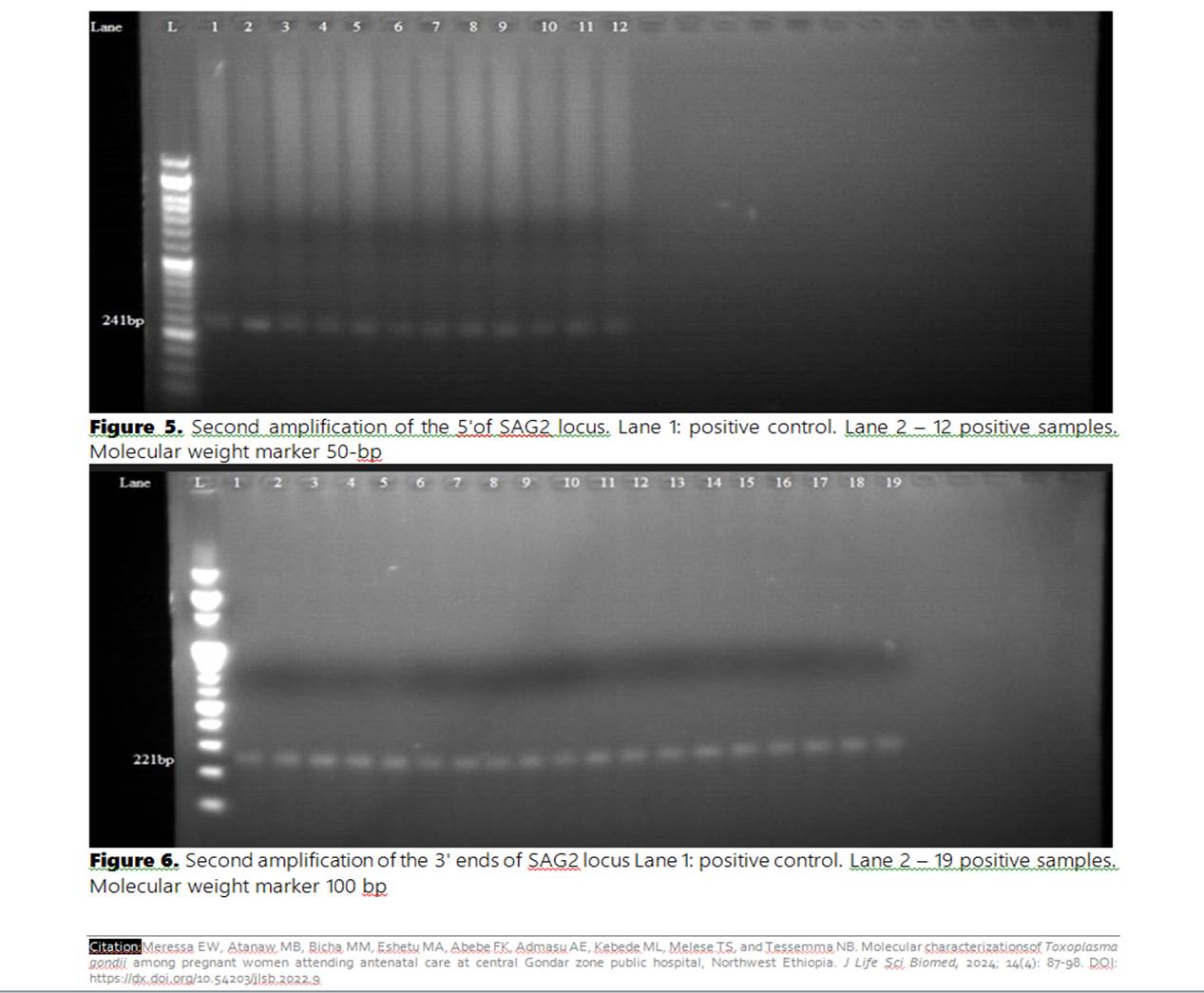 DOI: https://dx.doi.org/10.54203/jlsb.2022.9
DOI: https://dx.doi.org/10.54203/jlsb.2022.9
Abstract
Toxoplasma gondii parasite that causes severe clinical problems such as congenital toxoplasmosis is a major public health problem that affects one-third of the world’s populationand is also associatedwith a high socioeconomic impact for pregnant women. Molecular characterizations for genotyping using PCR for the detection of T. gondii genotyping were grouped into three subtypes, designated I, II, and III, based on polymerase chain reaction restriction fragment length polymorphism (PCR-RFLP).This study aimed to determine molecular characterizations of T. gondii among pregnant women attending Anti-Natal Care (ANC) at Central Gondar Zone Public Hospitals (CGZPH), Northwest Ethiopia. Between 2022 and 2024, a cross-sectional study design was conducted to determine the molecular characterizations of T. gondii among pregnant women attending ANC at CGZPH. In this study, We determined the B1 and Surface antigen 2(SAG2) genotypes of T. gondii in pregnant women using PCR-RFLP. The genotyping data were coded for all genetic loci. Our research provides baseline information essential for planning and implementing control and prevention strategies, thereby enhancing the knowledge and epidemiology of toxoplasmosis. The study revealed that the T. gondii population in the Central Gondar Zone is predominantly represented by type II strains, which are most commonly associated with human toxoplasmosis. The use of PCR-RFLP at the SAG2 and B1 loci proved to be efficient method for rapid genotyping.
Keywords: Toxoplasma gondii, Molecular characterization, Pregnant women, Ethiopia
[Full text-PDF] [ePub] [Export citation from ePrint] [How to Cite]
| Horizontal gene transfer: the hidden hazards of genetic engineering |
Review
Horizontal gene transfer: the hidden hazards of genetic engineering
Meressa EW and Tseha BA.
J. Life Sci. Biomed., 14(4): 99-108, 2024; pii:S225199392400010-14
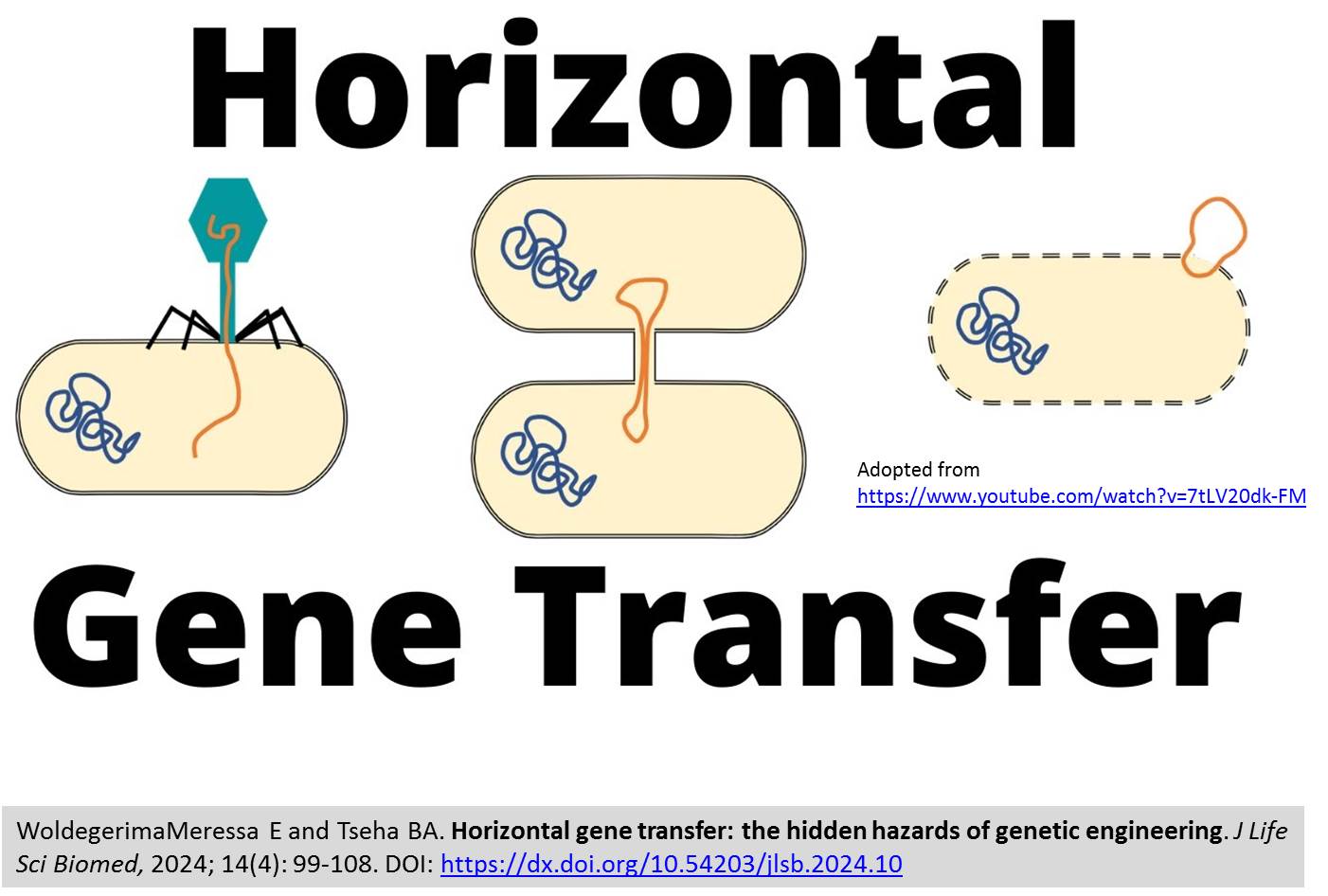 DOI: https://dx.doi.org/10.54203/jlsb.2024.10
DOI: https://dx.doi.org/10.54203/jlsb.2024.10
Abstract
Horizontal or lateral gene transfer involves to the movement of genetic material between organisms in a manner that is not associated with traditional reproduction. This process can occur through direct methods or via vectors, and it contrasts with vertical gene transfer, where genes are passed to offspring. Genetic engineering often utilizes artificial constructs to cross species barriers and integrate in to genomes, facilitating unregulated horizontal gene transfer. These constructs which typically include genetic elements, can naturally mediate horizontal gene transfer. This can lead to the spread of diseases, antibiotic resistance, and even cancer in mammalian cells. Given these risks, it is crucial to establish effective regulatory measures to prevent the release of these constructs into the environment and to consider the continuation of potentially hazard experiments. This review aims to highlight the current status and implications of horizontal gene transfer facilitated by genetic engineering, emphasizing the need for stringent regulatory measures to mitigate associated risks.
Keywords: Antibiotic resistance, artificial vector, dormant viruses, CaMV promoter, naked DNA, transgenic DNA
[Full text-PDF] [ePub] [Export citation from ePrint] [How to Cite]
| Assessment of long-term hemodynamic changes following balloon valvuloplasty for pulmonary artery stenosis |
Research Paper
Assessment of long-term hemodynamic changes following balloon valvuloplasty for pulmonary artery stenosis
Zufarov MM, Umarov MM, and Ibadov RR.
J. Life Sci. Biomed., 14(4): 109-115, 2024; pii:S225199392400011-14
 DOI: https://dx.doi.org/10.54203/jlsb.2024.11
DOI: https://dx.doi.org/10.54203/jlsb.2024.11
Abstract
Pulmonary artery stenosis (PAS) is a common congenital heart defect with a significant impact on the cardiovascular health of affected patients. Despite advancements in interventional cardiology, the long-term hemodynamic outcomes following balloon valvuloplasty (BV) for PAS remain insufficiently studied, especially in varying clinical and demographic subgroups. This knowledge gap necessitates further investigation. To assess long-term hemodynamic changes in patients with PAS after BV and analyze factors contributing to unsatisfactory outcomes. This single-center retrospective cohort study included 180 patients with PAS who underwent BV at the RSPPMCS named after Acad. V. Vakhidov between 2010 and 2022. Patients were categorized based on PAS type and baseline right ventricular systolic pressure (RVSP). Hemodynamic parameters were assessed using echocardiography and CT angiography. Kaplan-Meier survival analysis evaluated the durability of good and satisfactory outcomes. Statistical comparisons were made using t-tests and multivariate regression analysis, with p-values reported to three decimal places. Among the 180 patients, 144 (80.0%) had isolated valvular PAS, 27 (15.0%) had combined valvular-subvalvular PAS, and 9 (5.0%) had valvular-supravalvular PAS. Initial mean RVSP was 93.4±6.7 mmHg, which decreased significantly to 25.3±3.2 mmHg immediately post-BV (p<0.001). Long-term follow-up was achieved in 58 patients over five years, with mean RVSP stabilizing at 26.2±2.4 mmHg. Kaplan-Meier analysis revealed that 81.0% of patients maintained good outcomes at five years. Predictors of poor outcomes included inadequate balloon-to-annulus ratio (<1.2) and residual gradients ≥50 mmHg. Repeat BV improved outcomes in 100% of re-treated cases. BV demonstrates high efficacy in the long-term management of PAS, with sustained improvement in hemodynamics observed in most patients. Optimal balloon sizing remains critical to reducing residual gradients and ensuring long-term success. Further studies should explore additional predictors of restenosis to refine patient selection and procedural strategies.
Keywords: Pulmonary artery stenosis; balloon valvuloplasty; hemodynamic outcomes; congenital heart defects; long-term follow-up.
[Full text-PDF] [ePub] [Export citation from ePrint] [How to Cite]
| Evaluating the sensitivity and specificity of a rapid antigen screening test against real-time polymerase chain reaction for COVID-19 detection in northern Ethiopia |
Research PaperCOVID-19
Evaluating the sensitivity and specificity of a rapid antigen screening test against real-time polymerase chain reaction for COVID-19 detection in northern Ethiopia
Abebe B, Birhane N, Girmay G, Belete D.
J. Life Sci. Biomed., 14(4): 116-127, 2024; pii:S225199392400012-14
 DOI: https://dx.doi.org/10.54203/jlsb.2024.12
DOI: https://dx.doi.org/10.54203/jlsb.2024.12
Abstract
Early diagnosis and treatment of COVID-19-positive patients are crucial to limiting complications and transmission. Despite real-time PCR being considered a gold standard for the diagnosis of COVID-19, its availability is still limited. There is a paucity of studies that show the sensitivity and specificity of rapid antigen tests (RAT) in Ethiopia. This study aimed to evaluate the sensitivity, specificity and predictive values of rapid antigen tests for the diagnosis of sever acute respiratory syndrome coronavirus type-2 (SARS-COV-2 among COVID-19 suspected patients. A hospital-based cross-sectional study was conducted on COVID-19-positive and negative individuals in the University of Gondar Comprehensive Specialized Hospital from December 26, 2022, to April 30, 2023. Socio-demographic, behavioral, and clinical data were collected using a structured questionnaire. All nasopharyngeal or throat swabs were tested using the PanbioTM COVID-19 rapid antigen test and the BIO-RAD CFX connectTM reverse transcription-polymerase chain reaction. Sensitivity, specificity, Kappa, and positive and negative predictive values were analyzed using the online Medcalc statistical tool to determine the diagnostic performance of the rapid antigen test using the RT-PCR reference method. Out of 120 participants, 53.3% were female. In this study, sensitivity, specificity, and accuracy of the PanbioTM rapid antigen test were 98.36%, 100%, and 98.33%, respectively The positive and negative predictive values were 100% and 99.17%, respectively. The Kohen’s kappa statistic was 0.983 at 50% estimation of the disease prevalence. PanbioTM rapid antigen test resulthowed outstanding agreement with RT-PCR using a nasopharyngeal or nasal swab from symptomatic patients. The RAT affordable and provides immediate outcome with in short period of time. In order to quickly identify the positive cases and put isolation and infection control measure in place, this test can be used in regions where the numbers SARS-CoV-2 cases is fast increasing.
Keywords: COVID-19, diagnostic performance, PanbioTM, rapid antigen test
[Full text-PDF] [ePub] [Export citation from ePrint] [How to Cite]
Previous issue | Next issue | Archive
![]() This work is licensed under a Creative Commons Attribution 4.0 International License (CC BY 4.0)
This work is licensed under a Creative Commons Attribution 4.0 International License (CC BY 4.0)
Previous issue | Next issue | Archive
| Prevalence and antimicrobial susceptibility pattern of Staphylococcus aureus among patients at university of Gondar hospital northwest Ethiopia: a retrospective study of 25870 cases |
Review
Prevalence and antimicrobial susceptibility pattern of Staphylococcus aureus among patients at university of Gondar hospital northwest Ethiopia: a retrospective study of 25870 cases
Belete D, Gashaw T, Belay S, Ambachew A.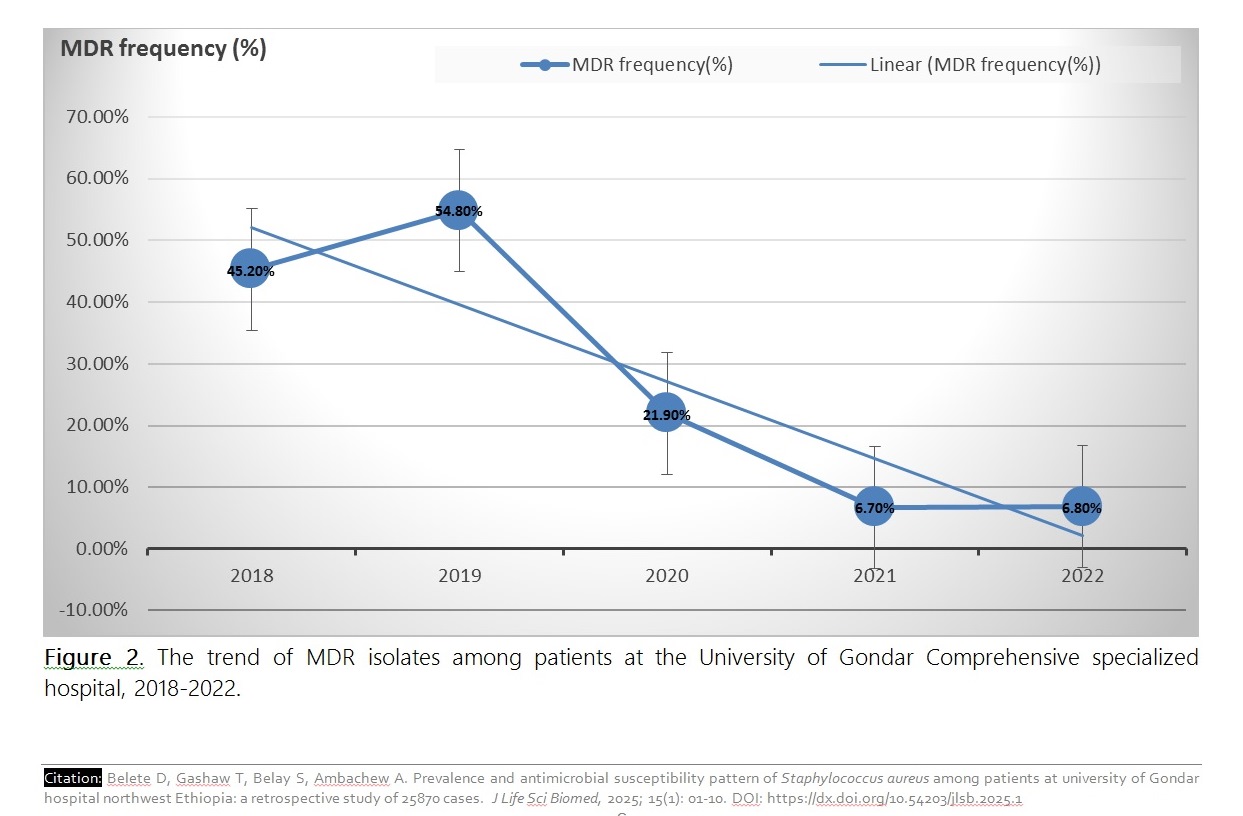 J. Life Sci. Biomed., 15(1): 01-10, 2025; pii:S225199392500001-15
J. Life Sci. Biomed., 15(1): 01-10, 2025; pii:S225199392500001-15
DOI: https://dx.doi.org/10.54203/jlsb.2025.1
Abstract
Emergence of antimicrobial resistance is a major public health problem worldwide, particularly in developing countries. The global spread of methicillin-resistant Staphylococcus aureus (MRSA) constitutes one of the most serious contemporary challenges to the treatment of hospital-acquired infections. The aim of this study was to determine the antimicrobial resistance pattern of Staphylococcus aureus isolate from different clinical specimens at University of Gondar comprehensive specialized hospital. A retrospective study used laboratory records of 25870 clinical specimens submitted for bacterial culture microbiology laboratory of University of Gondar comprehensive specialized hospital for bacterial culture and sensitivity testing from July 2018 and April 2022. Records from specimens positive for Staphylococcus aureus isolates were included for analysis. Standard bacteriological techniques were followed during culture preparation, sample collection, bacterial identification, and antibiotic susceptibility testing. Data was entered and analyzed using SPSS version 20. Of the total 25,870 samples culture records, 4653 (18%) were culture positive for bacteria. A total of 1057 S. aureus isolates were collected from clinical specimens such as: wound discharge (342; 32.4%), blood (312; 29.5%), cerebrospinal fluid (16; 1.5%), urine (21; 2%), other body fluids (71; 6.7%) and other discharge (295; 28 %). The prevalence of methicillin resistant S. aureus was 33.8% (233/698) and the overall prevalence of multi-drug resistant S. aureus out of 1057 S. aureus isolates was 36% (380/1057). We recommend further research on molecular studies evaluating the resistance genes and monitoring the epidemiology of multiple drug resistant S. aureus and MRSA.
Keywords: Methicillin resistant Staphylococcus aureus, Antimicrobial susceptibility pattern, Staphylococcus aureus
[Full text-PDF] [ePub] [Export citation from ePrint] [How to Cite]
| Pathomorphological features of the kidneys in patients with chronic kidney disease on dialysis with COVID-19 infection |
Research PaperCOVID-19
Pathomorphological features of the kidneys in patients with chronic kidney disease on dialysis with COVID-19 infection
Ibadov RA, Alimova HP, Yunusov AA, and Ibragimov SK. J. Life Sci. Biomed., 15(1): 11-17, 2025; pii:S225199392500002-15
J. Life Sci. Biomed., 15(1): 11-17, 2025; pii:S225199392500002-15
DOI: https://dx.doi.org/10.54203/jlsb.2025.2
Abstract
The current study aimed to investigate the pathomorphology of the kidneys in patients with chronic kidney disease (CKD) on dialysis infected with COVID-19, focusing on structural changes and their correlation with the severity of the infection. The study included autopsy data from patients infected with COVID-19 who had been undergoing renal replacement therapy for 6 months to 1 year and died at the Zangiota Republican Specialized Center in 2022. The study was conducted using kidney biopsy samples. Morphological analysis included macroscopic examination, histological, and microscopic methods to identify signs of inflammation, fibrosis, and thrombosis. The results showed that kidneys of patients with COVID-19 were enlarged, with a granular surface and subcapsular hemorrhages. Histological examination revealed necrotic nephrosis, tubulointerstitial fibrosis, significant vascular involvement, and vacuolar degeneration of the tubules. Thrombosis of vessels and ischemic infarctions were frequently observed, correlating with the severity of COVID-19. The formation of focal segmental glomerulosclerosis, associated with chronic inflammation, was a notable feature. COVID-19 induces significant pathological changes in the kidneys of patients with CKD on dialysis, aggravating the course of chronic kidney failure. It is concluded that there is a need for early detection and prevention of renal complications in patient with COVID-19.
Keywords: Chronic kidney disease, COVID-19, Pathomorphology, Glomerulosclerosis, Dialysis.
[Full text-PDF] [ePub] [Export citation from ePrint] [How to Cite]
Previous issue | Next issue | Archive
![]() This work is licensed under a Creative Commons Attribution 4.0 International License (CC BY 4.0)
This work is licensed under a Creative Commons Attribution 4.0 International License (CC BY 4.0)
Previous issue | Next issue | Archive
![]() Volume 14 (3); September 25, 2024
Volume 14 (3); September 25, 2024
| Anti-methanogenic effect of pyrogallol in Spirulina platensis – molecular docking and dynamics simulation on methyl-coenzyme M reductases |
Research Paper
Anti-methanogenic effect of pyrogallol in Spirulina platensis – molecular docking and dynamics simulation on methyl-coenzyme M reductase
Sadid MM and Anam MS.
J. Life Sci. Biomed., 14 (3): 45-53, 2024; pii:S225199392400005-14
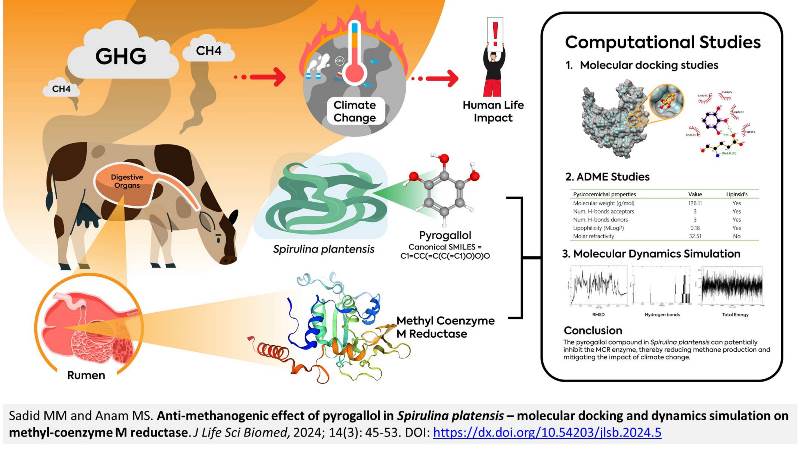 DOI: https://dx.doi.org/10.54203/jlsb.2024.5
DOI: https://dx.doi.org/10.54203/jlsb.2024.5
Abstract
Methane, along with carbon dioxide and nitrogen oxides, is a key greenhouse gas contributing significantly to the global concern over climate change. This study investigated the anti-methanogenic properties of pyrogallol in Spirulina platensis using molecular docking and dynamics simulation on methyl-coenzyme M reductase (MCR). The Swiss ADME web server was used to identify pyrogallol's absorption, distribution, metabolism, and excretion (ADME) properties. Molecular docking studies were conducted using UCSF Chimera with the Vina script as the executor. The docking results were further analyzed through molecular dynamics simulation using Gromacs-2024. ADME analysis indicated that pyrogallol meets Lipinski’s Rule of Five. Docking studies revealed that pyrogallol has a binding affinity of 4.6 kJ/mol with 2 hydrogen bonds and 1 hydrophobic interaction. Additionally, the MCR-pyrogallol simulation results showed fluctuating root mean square deviation (RMSD) values that stabilized at t = 26,200 until the end of the simulation with an average value of 2.50 nm. Moreover, the hydrogen bonds formed during the simulation fluctuated, with no bonds observed for more than 75% of the simulation time. The energy released during the simulation reached –300.24 kJ/mol with an average of –5.19 kJ/mol. In conclusion, the pyrogallol compound in Spirulina plantensis can potentially inhibit the MCR enzyme, thereby reducing methane production and mitigating the impact of climate change.
Keywords: Anti-methanogenic, methyl-coenzyme M reductase, molecular docking, pyrogallol, Spirulina platensis
[Full text-PDF] [ePub] [Export citation from ePrint] [How to Cite]
| Current vaccine candidate of toxoplasmosis |
Review
Current vaccine candidate of toxoplasmosis
Woldegerima E, Getachew F, Misganaw M, Mesfin Y, Belete D, Sisay T, Berhane N.
J. Life Sci. Biomed., 14 (3): 54-67, 2024; pii:S225199392400006-14
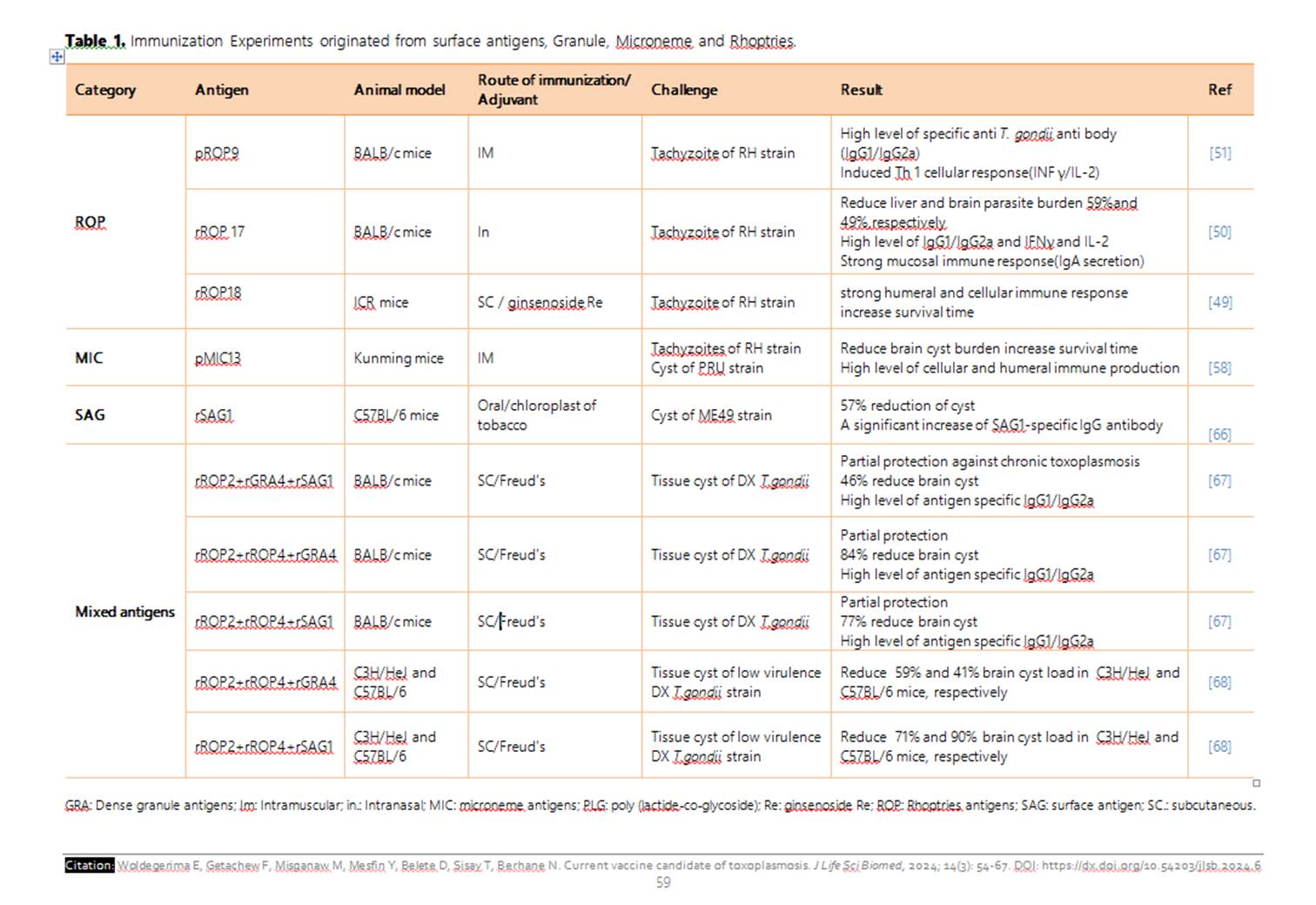 DOI: https://dx.doi.org/10.54203/jlsb.2024.6
DOI: https://dx.doi.org/10.54203/jlsb.2024.6
Abstract
Toxoplasma gondii is an intracellular protozoan parasite belonging from the phylum Apicomplexa, known for causing toxoplasmosis. The disease has a global presence, affecting about one-third of the world’s population. The parasite infects various intermediate hosts, including humans and other warm-blooded mammals, with cats serving as the definitive hosts. Its life cycle is complex, featuring a sexual phase in the definitive host and an asexual phase in intermediate hosts. Toxoplasmosis can leads severe neurologic, ocular, and systemic diseases in neonates and immunocompromised individuals. In immunocompetent individuals, the infection is typically asymptomatic, forming dormant tissue cysts in immune-privileged sites such as the muscles and brain. During pregnancy, toxoplasmosis poses significant health risks, potentially causing severe birth defects or miscarriage, and a major concern for immunocompromised hosts. Current control measures are inadequate, highlighting the need for effective vaccines. The initial host defense against T. gondii occurs at the intestinal mucosa, where cytokines and chemokines released by intestinal epithelial cells facilitate the migration of inflammatory cells, including macrophages, neutrophils, and dendritic cells. Developing a vaccine that can enhance this mucosal immunity is crucial for preventing toxoplasmosis. Therefore, the development of vaccines against T.gondii is a promising alternative mechanism to prevent toxoplasmosis. This review aims to present the current status of vaccine candidates against Toxoplasma gondii.
Keywords: Vaccine, Candidate, Toxoplasmosis, Toxoplasma gondii
[Full text-PDF] [ePub] [Export citation from ePrint] [How to Cite]
| Maternal outcomes in pregnant women with COVID-19: impact of disease severity, timing of intervention, and SARS-CoV-2 variants |
Research Paper
Maternal outcomes in pregnant women with COVID-19: impact of disease severity, timing of intervention, and SARS-CoV-2 variants
Alimova KP, Ibadov RA, Tyan TV, and Ibragimov SK.
J. Life Sci. Biomed., 14 (3): 68-76, 2024; pii:S225199392400007-14
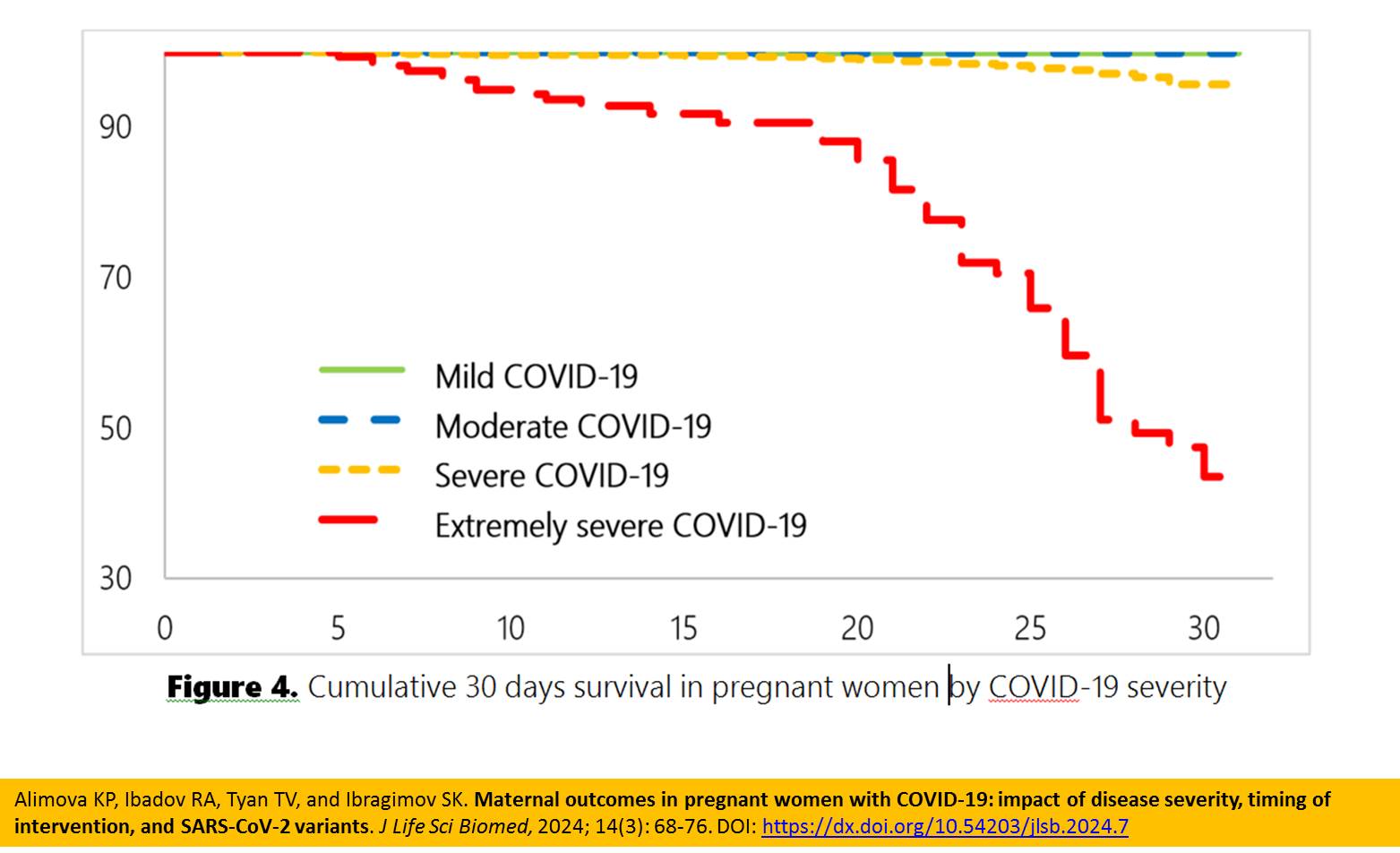 DOI: https://dx.doi.org/10.54203/jlsb.2024.7
DOI: https://dx.doi.org/10.54203/jlsb.2024.7
Abstract
This study aimed to analyze maternal outcomes in pregnant women infected with COVID-19, focusing on the impact of disease severity, timing of medical intervention, and the effect of different SARS-CoV-2 variants. A retrospective analysis was conducted on 9,288 pregnant women diagnosed with COVID-19. Disease severity was classified as mild (30%), moderate (52%), severe (17%), and critical (2%). The study also examined the timing of medical care, with 41.6% of women seeking care within 7 days of symptom onset and 58.4% after 7 days. The average gestational age was 271.8 days, with the majority (93.8%) at full-term pregnancy. Results indicated that 88.2% of women continued their pregnancies during treatment, while 11.9% experienced pregnancy termination, including preterm deliveries and miscarriages. The study found a significant (p<0.01) association between COVID-19 severity and adverse outcomes, such as preterm birth and maternal mortality. Severe and critical cases demonstrated increased risks of uteroplacental insufficiency (52.1% and 85.5%, respectively), the need for intensive respiratory support, and ICU admission. The differences in outcomes between the Delta and Omicron variants are also highlighted. The Delta variant was associated with more severe disease and higher rates of complications, including a higher need for cesarean sections, compared to the Omicron variant. The overall 30-day survival rate was 98.05%, with a noticeable drop to 43.59% in critically ill patients. This study underscores the importance of early medical intervention and continuous monitoring in managing COVID-19 in pregnant women. The findings also emphasize the need to consider the variant-specific effects of SARS-CoV-2 on maternal and neonatal outcomes, which can guide clinical decision-making and improve the prognosis for both mother and child.
Keywords: COVID-19, pregnancy, maternal outcomes, SARS-CoV-2 variants, preterm birth, uteroplacental insufficiency, respiratory support, intensive care, maternal outcomes
[Full text-PDF] [ePub] [Export citation from ePrint] [How to Cite]
| Resistance gene detection database for antimicrobial resistance investigations emphasizing on genomics and metagenomics techniques |
Review
Resistance gene detection database for antimicrobial resistance investigations emphasizing on genomics and metagenomics techniques
Alemnew M, Gelaw A, Nibret K, Getu A, and Berhane N.
J. Life Sci. Biomed., 14 (3): 77-86, 2024; pii:S225199392400008-14
 DOI: https://dx.doi.org/10.54203/jlsb.2024.8
DOI: https://dx.doi.org/10.54203/jlsb.2024.8
Abstract
Antimicrobial resistance poses a grave threat to global health where bacteria become resistant to antimicrobials, rendering them ineffective against infections. It leads to increased illness, death, and healthcare costs. The overuse and inappropriate use of antibiotics in both human medicine and animal agriculture are the primary drivers of antimicrobial resistance. Methods for identifying antimicrobial resistance genes include culturing bacteria with antimicrobial susceptibility test, polymerase chain reaction, and whole genome sequencing for genomics and Metagenomics samples. Newer methods like whole genome sequencing are faster and more accurate. Metagenomics is a powerful tool that can be used to study antimicrobial resistance in various environments. It can study culturable and non-culturable bacteria and used to study samples from humans, animals, and the environment. Resistance gene detection databases serves as a centralized repository of knowledge about resistance genes, mechanisms, and trends of antimicrobial. Databases categorize resistance information by genetic factors, mechanisms, specific drugs, and drug families. This review focuses on powerful and updated databases for detecting resistance genes, including: CARD, ResFinder with pointFinder, ResFinderFG v2.0, MEGARes v3.0 and NDARO. This review aims to examine the significance of antimicrobial resistance databases and techniques in combating antimicrobial resistance. It compares the advantages and disadvantages of different databases for storing and techniques for identifying antimicrobial resistance genes. Additionally, it inform researchers in evaluating antimicrobial resistance study methodologies and database choices based on antimicrobial resistance factors such as microorganism type, study setting, data type, resistance gene nature, resistance focus and novelty of resistance mechanisms. The primary aim of this review is to compare different powerful databases and techniques for identifying ARGs, an issue that hasn't been thoroughly covered in other reviews. These databases provide valuable resources for researchers studying antimicrobial resistance, offering a comprehensive collection of resistance gene sequences and annotations. This knowledge is essential for developing innovative strategies to combat AMR and ensure the ongoing effectiveness of antibiotics.
Keywords: Antimicrobial Resistance, Database, Metagenomics, Resistance, Resistance gène
[Full text-PDF] [ePub] [Export citation from ePrint] [How to Cite]
Previous issue | Next issue | Archive
![]() This work is licensed under a Creative Commons Attribution 4.0 International License (CC BY 4.0)
This work is licensed under a Creative Commons Attribution 4.0 International License (CC BY 4.0)


